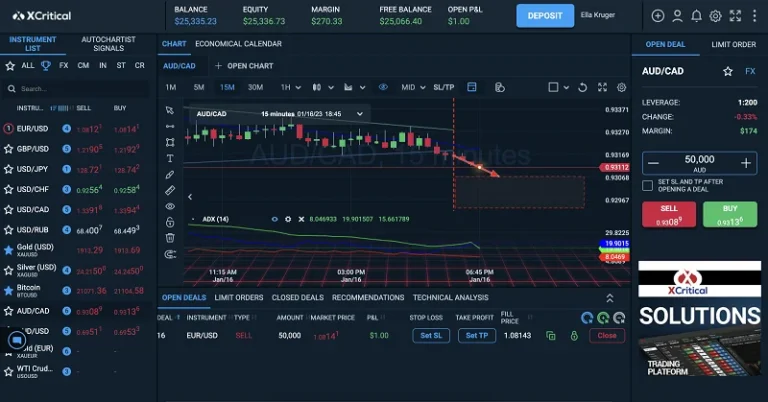Content
Permissioned blockchains only allow verified participants to perform specific actions. Anyone can join the network after verification of their identity and permission allocation. However, permissioned forex crm blockchains limit each user’s actions to their network permissions.
Future Projections for Private Blockchain
With fewer nodes to reach consensus, these networks can scale more efficiently to meet business needs. For instance, a private blockchain deployed within a supply chain ecosystem can process a large volume of transactions, such as inventory tracking and product authentication, without experiencing congestion or delays. This scalability enables enterprises to streamline operations and improve efficiency without sacrificing performance. Public blockchains are open to anyone with an internet connection, allowing for inclusivity and participation from which is better public or private blockchain individuals and organizations worldwide.

Public Vs Private Blockchain: Key Differences
Even if this did happen, the modification would be publicly provable and detectable. Franklin Templeton (Publicly listed $1.5T USD financial institution) says, “private blockchains will fade next to fast-innovating public utility chains”. Private blockchains give organizations greater control over the network. They can set their own rules and https://www.xcritical.com/ governance structures, and they have the ability to make changes to the network as needed. This allows organizations to tailor the network to their specific needs and requirements.
The Public Blockchain: Private By Design
Let’s check out the next feature in this public blockchain vs private blockchain guide. Private blockchains allow for more security and privacy in the logistics industry. Asset tracking, record of ownership, and shared record keeping benefit manufacturers, supply chain participants such as delivery companies, and customers in following items from their origination to destination. “In the end, it’s just one private blockchain plus one public blockchain,” Strehle said. Over a seven-year span, blockchain is expected to grow from an estimated $4.3 billion industry to a whopping $228 billion industry by 2028, according to a report by Insight Partners. That figure includes both public and private, as well as consortium, blockchains.

It uses a novel consensus mechanism in which transactions are cryptographically linked but does not periodically batch multiple transactions into a block. One of the key benefits of this approach is that all transactions are processed in real time, which can improve performance compared to other types of blockchains. Introduced in 2013, Ethereum is one of the oldest and most established blockchain platforms. It provides a truly decentralized blockchain and is considered to have strong support for smart contracts, a type of self-executing program that is considered a potential blockchain killer app.
- Ensuring robust security measures and access controls is paramount to mitigate these risks.
- Furthermore, the miners are also incentivized to participate in the blockchain, as they are rewarded with bitcoin for each computation they complete.
- People can join in and participate in consensus, and transact with their peers as they, please.
- It takes advantage of the core work on the Ethereum blockchain platform and repackages it into a hardened environment suitable for banks.
- It has been optimized to support high-speed transactions between institutions, such as banks and insurance companies, on a private network.
During peak hours, when tons of transactions are happening at once, things can slow down a bit. Every participant in the network needs to verify each transaction, and that can create a bottleneck as the network grows. This can lead to transaction delays and even higher fees during periods of heavy use. This transparency builds trust among participants, as everyone can see what’s happening.
Today, around 40 million people are using blockchain technology, and by 2024, the market is expected to reach $19 billion USD, according to Imaginovation. This growth shows just how important blockchain is becoming as the foundation for a decentralized, secure system that puts users in control. Ultimately, the choice between public VS private blockchains depends on your priorities. While advancements are being made to improve scalability in public blockchains, they may not be ideal for applications requiring high transaction volume or real-time processing.
The promise of distributed ledger technology (DLT) is appealing to most firms. After all, who doesn’t face challenges with the way their market processes and shares data? But business leaders seeking to apply this technology are all too often accosted with conflicting advice and opinions about what kind of DLT they should use to solve their problem. Any data published on the public blockchain can simply be encrypted or even multi-encrypted before publishing to the blockchain, thus enhancing the security.
Quorum, another notable private blockchain, was developed by JPMorgan Chase and offers both high performance and robust privacy features. This makes it suitable for financial institutions and other enterprises handling sensitive data. Quorum can be used to create private and confidential digital assets, enabling secure tokenization and trading. Unlike traditional ledgers controlled by a single authority, blockchain distributes information across a vast network of computers. The purpose-built and exclusive nature of private blockchains actually render them more insecure than the public blockchain.
Public blockchains are ideal for businesses that require a high level of transparency and do not need to store sensitive data. They are also useful for businesses that operate on a global scale and want to ensure equal access and opportunities for all users. However, they may not be suitable for businesses that require fast transaction speeds, low energy consumption, and a clear governance structure. On the contrary, private blockchains often take a more energy-efficient approach. Since they operate with a limited number of validators, the computational power needed for validation is significantly lower compared to public blockchains.
Each block contains key information, including a cryptographic hash of the previous block, a timestamp, and transaction data. Before a new block is added, miners use their combined computational power to validate the information. The internet changed our world by breaking down barriers and making instant communication possible. Now, blockchain, built on the foundation of the internet, is taking things a step further, offering a more secure and decentralized digital landscape. Just as I said before, public blockchains are like those bustling marketplaces that are always buzzing with activity.
This can make it easier to maintain the security and integrity of the network because there are fewer potential attackers. Plus, it’s often easier to achieve consensus on decisions or changes to the network because only authorized participants are involved. Permissioned blockchains can also be configured to have 0 gas fees and much higher throughput. Generally gas fees are a security mechanism to prevent DDOS attacks as it would be very expensive. On permissioned chains though, security can be done through role based access control whereby only approved users can make transactions on the chain. Private blockchains, such as Quorum and Corda, excel in controlled environments.
MetaMask Institutional helps improve workflows for compliance, data aggregation, monitoring, reporting and custody for enterprises. With private blockchains, efficiency and immutability are prioritized over the safeguarding of user identities and transparency. Because they have less users in the centralized network, they can process more transactions because less time is needed to reach a consensus to validate a transaction. If you are looking to get full consensus, the public blockchain will usually be the best solution for you and your enterprise.
Leave a Reply